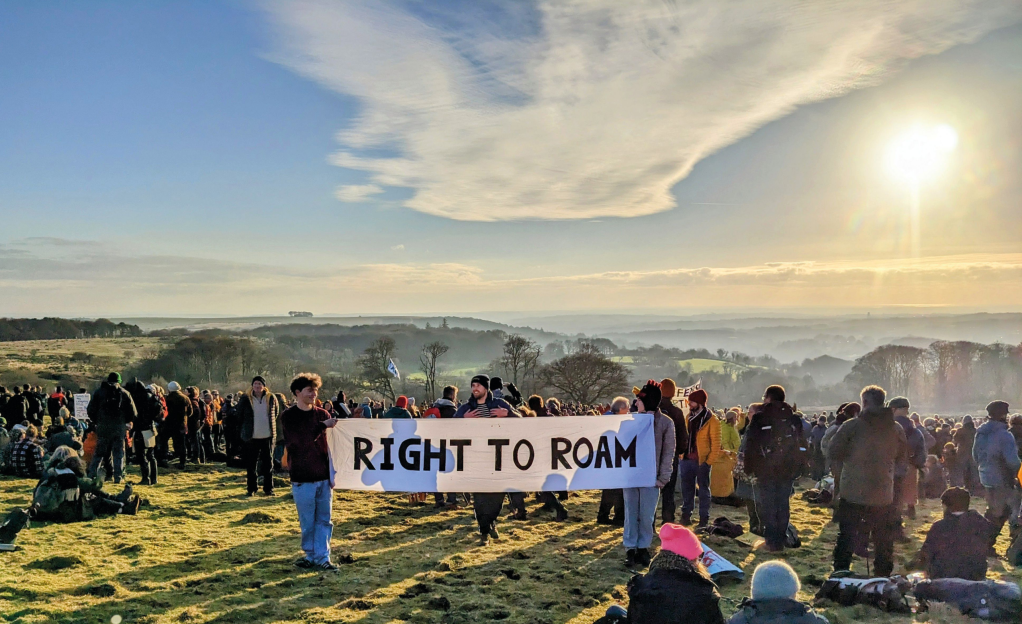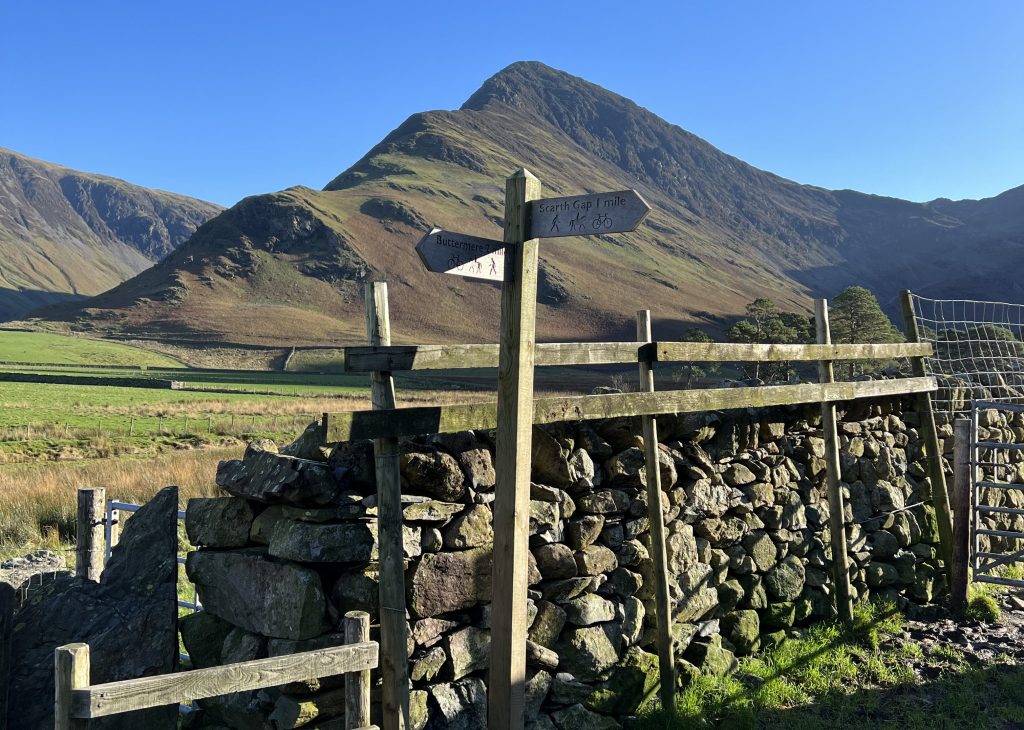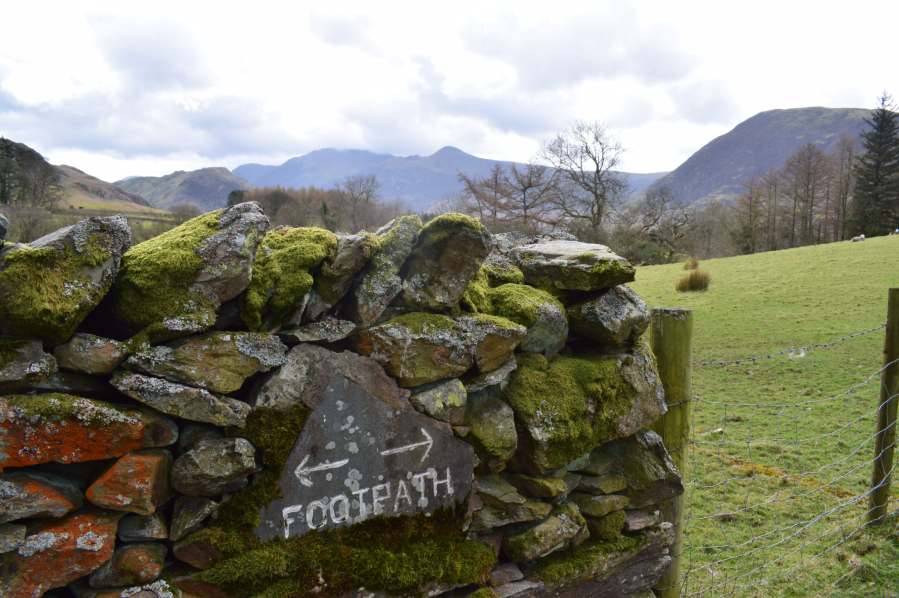Back in January, as we learned the last measly pocket of wild camping rights in England was due to be extinguished, the Labour Party capitalised on the mass public outrage by announcing its commitment to a Right to Roam Act.
But what exactly did that mean?
Main image: a footpath sign in the Lake District | Credit: James Forrest
Labour were cagey, but the signs were promising. Rights to access ‘woodlands, cliffs, rivers’ were mentioned. Policy would consider the ‘right to experience’, the ‘right to explore’ as well as the mere ability to walk from A to B along a fixed route. We might see activities like swimming and camping – either prohibited or ignored by existing access policy – empowered with a new set of statutory guarantees.
Campaigners like ourselves were heartened when, in a parliamentary debate on access to nature, then-Shadow Minister for Nature Alex Sobel said: “Like in Scotland, Labour’s approach will be that our right to roam will offer access to high-quality green and blue spaces for the rest of Britain. We will replace the default of exclusion with a default of access and ensure the restoration and protection of our natural environment.”
This was precisely what the Right to Roam campaign had been arguing for. Not a ‘free for all’ as some critics have it, nor a ‘right to trample’, but a default presumption of access in which exclusion had to be justified rather than assumed. It would finally put our access rights, long contoured around the landed interest, on a democratic footing. It would build on twenty years of successful experience in Scotland, allowing us to adapt and improve on its example.
Row back
Yet, last week Labour rowed back on Sobel’s comments, stating it was looking instead at extending the Countryside and Rights of Way (CRoW) Act, rather than introducing a presumption of access and working backwards from there. This would still be welcome progress. But it’s a choice which risks sacrificing both principle and pragmatism on the altar of political expediency. Extending CRoW to incorporate more land designations (like woodlands and rivers) could be complicated – the original legislation in 2000 took five years to implement and involved a lot of costly mapping exercises – and might create a landscape of access islands without easy means of navigation to or between.

4,000 people congregating on Dartmoor in defence of access rights in January 2023. Credit: Jon Moses
Labour appears to have been spooked by the hostility of farmers – though the Country Land and Business Association (CLA), the body representing major landowners, also claimed credit. Farmers worry a default approach will see people popping up all over their farms willy-nilly, making moving livestock and heavy machinery more treacherous.
We shouldn’t dismiss those concerns. But nor are they insurmountable. Farmers want predictability. The wider public wants connectivity. It doesn’t take much political imagination to see there’s a solution that might work for everyone – and an agricultural funding model via the new principle of ‘public payments for public goods’ – which could deliver it.
Even without such payments, the Scottish model de facto incentivised farmers and other land managers to create their own access infrastructure, since the easiest way to get people to stick to the path is to create a good path for them. Public support would make this option more widely available and provide an additional incentive, while giving land managers a way to control where the vast majority of people actually go.
In turn, wider ‘default’ rights would reduce the complexity of the policy, help ensure the access infrastructure actually happens, and mean those designing it have to factor where people actually intend to go into their planning (lest people begin to vote with their feet instead). No more tax breaks for permissive paths which permit passage along the edge of the A-road, while thousands of acres of inaccessible parkland stretch out in the distance. In short, we would end up with a reasonable compromise of interests, underpinned by a shared set of responsibilities, within a wider framework of rights.
Supportive
Pragmatics aside, the politics of fudging this issue make little sense. Despite the prevailing myth that access reform is a ‘townie’ issue unwanted by those in the countryside, a large majority of rural voters are unsurprisingly supportive, since it affects their daily lives more directly than anyone else. When we polled approval for implementing a Scottish-style ‘default of access to most land and water in England’ (with the usual exceptions for domestic privacy, growing crops and other sensitive sites), we found a resounding 62% of voters were in favour, with only 19% opposed (and only 6% of those ‘strongly’).

A fingerpost inn the shadow of Fleetwith Pike. Credit: Francesca Donovan
More interestingly, those majorities spanned all ages, regions and political affiliations. Even our most sceptical respondent (in YouGov terms: a Leave voting Tory between the ages of 50-64 from the Midlands) is nearly twice as likely to support comprehensive access rights as not. This, for a policy the Countryside Alliance is still rather desperately trying to brand as “Marxist”.
With a similar desperation, the government is also busy trying to turn right to roam into a ‘wedge’ issue, pitting farmers (who are abandoning the party in droves) against the interests of wider society. Labour are right to avoid playing into such silliness. But it needn’t preclude their being bold.
The ability to access one’s environment should not be a radical expectation. Explain people’s rights, make clear their responsibilities. Factor in farmers’ needs. Regulate dog ownership and educate dog owners. Include some sensible exemptions for the most sensitive wildlife areas and help people become advocates for nature where they can.
Done well, access reform can literally be a bridge builder: connecting rural communities and ways of life which face increasing atomisation and isolation. Centuries of enclosure and rural depopulation emptied the countryside of its people and homogenised the wonder and distinctiveness of rural culture. It’s time to bring the people and the wonder back.
Read more: Why we need to rethink the ‘right to roam’








